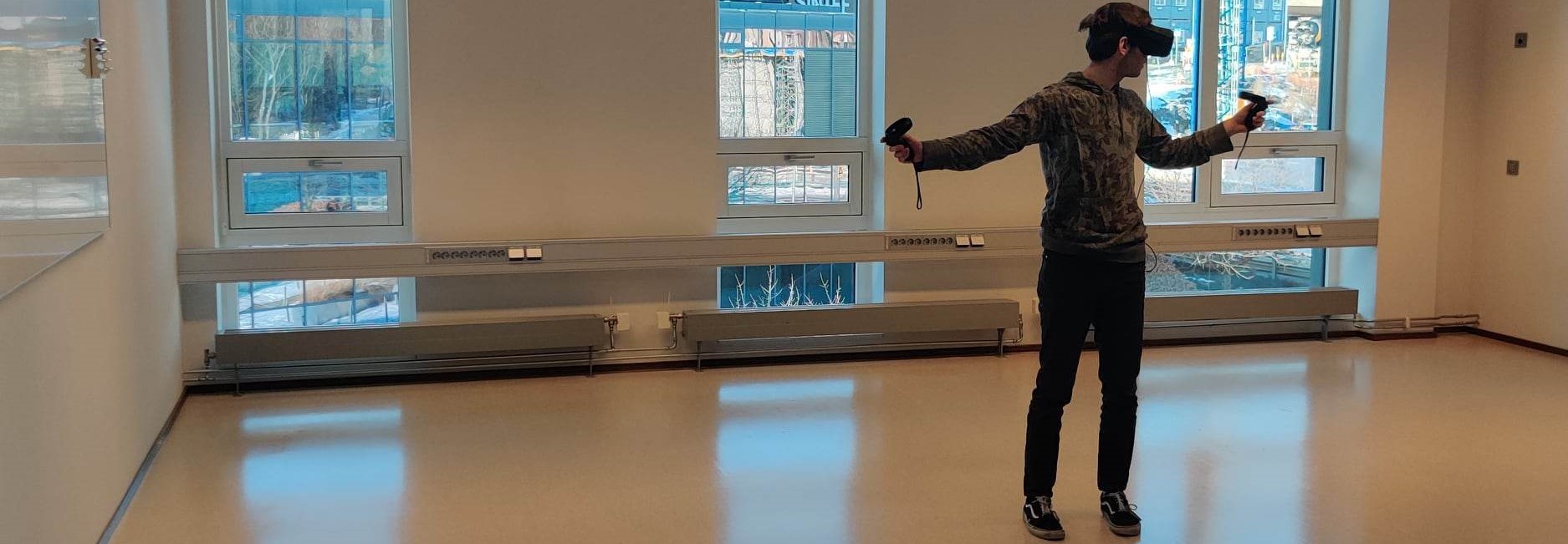What is Redirected Walking?
Virtual reality (VR) allows us to dive into virtual worlds and experience them in first person. Several of our senses can be used in this experience, and the senses of vision, sound and touch work reasonable well. What we can also achieve is the sense of our own body, the so-called proprioperceptive or kinesthetic sense.
When we used VR headsets today, programs react to the motion of the head in real time, and mimic those moves in the virtual world. To some extent, also hand and body pose can be tracked or deduced. However, most of the time, we sit in a chair and to move our first-person avatar. This feels unnatural and restrictive as it removes a key physical aspect of moving around in the virtual environment.
Wearing VR headsets, we can walk around in the real world, and by way of of tracking, this motion can be brought into the virtual world as well. This translation creates a high level of immersion but it is limited. The physical space in the real-world is limited by things such as walls and obstacles in the real world, where these don’t exist in the virtual world. At this point, Redirected Walking appears.
The term describes the ”perceptually unnoticeable virtual camera motion offset from a user’s movement”. Essentially, the system assesses the layout of the real and the virtual world, and works continually to rotate the virtual world’s coordinate system against the real-worlds coordinate system.
Specific question for this thesis
In this thesis, you will extend our knowledge of redirected walking. You will make use of the software that we have already developed and extend it to conduct new research. Our own developments are documented in the master theses listed in the sidebar.
The existing software makes use of Unreal Engine on Windows, OpenXR and SteamVR, with VR devices comprising Oculus Rift and Quest headsets as Vive trackers.
Our current results have been achieved with very simple, hand-crafted game levels. We do not know if the simplicity and lack of realism of such games makes it harder for players to become immersed in the virtual world compared to virtual worlds that contains realistic, high-quality graphics. Furthermore, we do not know if players who are not deeply immersed in the virtual world notice more easily when we redirect their motion, and whether they consider it more annnoying.
With the promise of a simplified creation of realistic environment in Unreal Engine 5.2, there is now an opportunity to compare different levels of realism and study this question. In the thesis, you will create a set of environments with different levels of realism and conduct user studies to answer the open research question.
Learning outcome
Experience in
- in formulating, investigating and answering research questions
- with the development of VR scenarios with Unreal Engine
- conducting, evaluating and interpreting user studies
Conditions
We expect that you:
- have been admitted to a master's program in MatNat@UiO - primarily PROSA
- take this as a long thesis
- will participate actively in the weekly SINLab meetings
- are present in the lab and collaborate with other students and staff
- are interested in and have some knowledge of C/C++ programming
- are interested in conducting user studies
- are willing to share your results on Github
- include the course IN5060 in the study plan, unless you have already completed a course on classical (non-ML) data analysis
